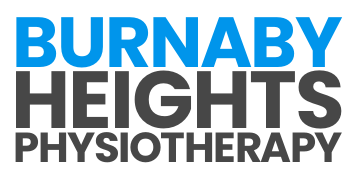Boost Your Confidence with Pelvic Floor Physiotherapy for Sexual Health
October 27, 2025Unlock Relief: Pelvic Floor Physiotherapy for Endometriosis
October 27, 2025Pelvic girdle pain can make everyday tasks feel heavier than they need to be. You might notice sharp aches during simple movements like getting out of the car or climbing stairs. Fortunately, pelvic floor physiotherapy for pelvic girdle pain can help you improve stability, reduce discomfort, and regain momentum in your daily life. Below, you will find practical tips and insights to support your recovery.
Understand Pelvic Girdle Pain
Pelvic girdle pain typically arises when the joints and ligaments around your pelvis become strained. You may feel a dull ache or sharp twinges in your hips, lower back, or groin. Common triggers include:
- Sudden changes in posture
- Standing or sitting for long periods
- Pregnancy and postpartum adjustments
- High-impact exercises without proper support
When the pelvic region is misaligned or overstressed, even routine activities can start to hurt. Recognizing these causes is the first step to targeting the underlying problem and avoiding further flare-ups.
Try Pelvic Floor Exercises
Pelvic floor physiotherapy focuses on strengthening the muscles that support your pelvic organs. This is where targeted exercises shine:
- Kegel Contractions
- Gently tighten your pelvic floor muscles as if you’re stopping urine flow.
- Hold for a few seconds, then release.
- Perform 8 to 12 reps, and repeat twice a day.
- Hip Bridges
- Lie on your back with knees bent, feet on the floor.
- Engage your core and pelvic floor, then lift your hips.
- Keep your pelvis level before lowering slowly.
- Modified Squats
- Stand with feet hip-width apart, bracing your midsection.
- Gently squat, focusing on activating your pelvic floor.
- Maintain proper form in your knees and back.
As your strength builds, you can explore more advanced routines. If you are also navigating transitions like pregnancy or postpartum recovery, consider pelvic floor physiotherapy for pregnancy or pelvic floor physiotherapy postpartum to address related concerns.
Avoid Common Aggravators
Effective physiotherapy means more than just exercises. You also want to minimize habits that strain your pelvis:
- Limit prolonged sitting: Aim to stand or stretch every 30 minutes.
- Use supportive footwear: High heels or worn-out shoes can push your posture off balance.
- Lift objects properly: Always bend at the knees, engage your core, and avoid sudden twists.
- Sleep with support: A pillow between your knees can ease tension, especially if you tend to sleep on your side.
Small daily changes go a long way in preserving your newly strengthened muscles and preventing improper alignment.
Seek Pro Support Early
Pelvic girdle pain may sometimes feel manageable at first, but early intervention can spare you needless discomfort. If symptoms worsen or persist for more than a few weeks, consulting a pelvic floor specialist is a smart move. A professional physiotherapist can:
- Identify misalignments or muscle imbalances.
- Suggest a custom exercise plan that grows with your progress.
- Offer manual therapy and posture coaching.
- Monitor your recovery to ensure the best long-term outcome.
If your discomfort involves broader pelvic issues, you might explore pelvic floor physiotherapy for pelvic pain, which addresses an array of conditions that can overlap with pelvic girdle pain.
Make Daily Activities Easier
Once you have a strategy from your physiotherapist, blend it into your routine. Simple tweaks like stretching, using heat packs, or pacing your tasks can lessen strain on your pelvis. Keep track of your progress in a journal or app. That way, you can celebrate small wins like sitting comfortably through dinner or walking without twinges of pain.
Your Next Steps
Pelvic girdle pain does not need to sideline you. Through pelvic floor physiotherapy for pelvic girdle pain, you can strengthen key muscles, adopt body-friendly habits, and maximize relief in the long run. Trust your progress, stay consistent, and remember that professional support is there whenever you need extra guidance. You deserve to move through life with confidence and comfort.


